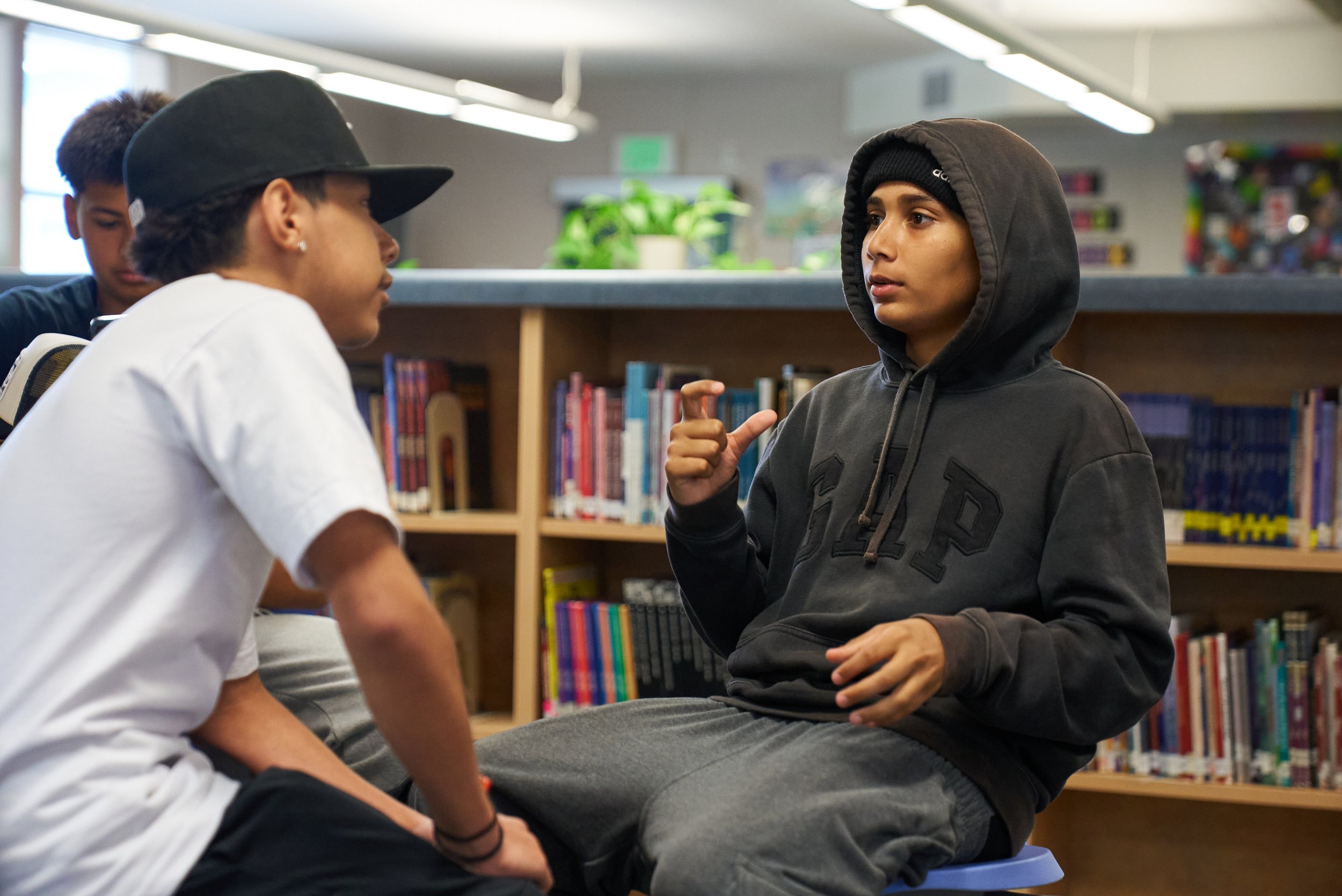District Redesign Network
Redesigning systems to transform student experience
One of the most vital ways we sustain ourselves is by building communities of resistance, places where we know we are not alone.
bell hooks
Program Overview
The National Equity Project’s District Redesign Network is a national network of U.S. school districts seeking to deeply understand their own equity landscape in order to redesign their school system to improve learning conditions and experiences for Black, Indigenous, People of Color (BIPOC) and LGBTQIA+ students, in service of improving conditions for all students.
From 2019 to 2023, NEP led networks of school districts nationally, in the Midwest and in California as a partner in the Building Equitable Learning Environments (BELE) Network. (Read more about the impact of the NEP-BELE District Network here.)
Launched in fall 2023 and building on the lessons and impact of those networks, the District Redesign Network requires school district partners to demonstrate:
a commitment to implementing a set of changes known to create conditions for equitable whole child learning (Essential Actions); and
a commitment to identify and interrogate the system dynamics, underlying assumptions, and mental models that have hindered equitable outcomes in the past and present, so that a new way forwards with student experience at the center of their system becomes possible.
Focus on Student Experience
Research shows that the experiences and social interactions students have every day in their classrooms and school community impact their academic learning, as well their overall development and wellbeing. The Science of Learning and Development confirms that a student’s ability to learn is strongly intertwined with their social, emotional, cognitive, and physical needs and sense of belonging. Unfortunately, the quality of relationships, opportunities, and resources, afforded to young people in our schools continues to be patterned by race, class, gender, and other social categories.
Educators have enormous power to shape learning contexts and influence students’ experiences of school. In the District Redesign Network, diverse, cross-role and function teams (which include students) are supported to create a culture of learning and action to ensure that every young person has access to the conditions they need to feel connected, engaged in learning, and experience academic and social emotional growth.
Participating districts:
Assess the current state of student experience and learning using multiple forms of data and informed by diverse perspectives throughout your system
Complete a systems landscape analysis to learn about how the current system contributes to existing patterns, including structural barriers and constraints impeding some groups to thrive
Increase system leadership and organizational capacity to design, lead and manage student-centered change efforts by engaging and elevating student experience and learning data to inform systemic changes.
Generate demand and collective commitment by acting on a district’s publicly stated commitments (strategic/equity plans) to improve the experiences, learning and wellbeing of students - especially those situated farthest from opportunity.
Form a district-level, cross-role and function redesign team to lead, guide, and catalyze learning and change efforts to increase well-being, learning, and healthy development throughout the system.
Learn to learn: decide on a direction for learning and action, begin to test interventions using a Liberatory Design approach (nudges and safe-to-fail probes) and monitor and adapt interventions based on feedback and data.
Identify and create internal structures needed to support ongoing inquiry collaboration and change work.
Learn from and collaborate with districts engaged in redesign from across the country.
Why a Network?
Transforming school systems is hard work; many educators find themselves burning the candle at both ends, hoping their work will make a positive impact for children and families. Despite our best efforts, inequitable experiences and outcomes remain largely the same.
The work of leading change can be isolating. The District Redesign Network is a community of leaders committed to improving the experience of school for young people. This cohort of districts share a vision for change and commitment to reflecting, learning and taking action together.
Learn More & Join Us
The District Redesign Network is part of the BELE Network, an innovative national ecosystem that includes partnerships between the National Equity Project, the UChicago Consortium for School Research, Project for Education Research that Scales (PERTS) and the Collaborative for Social, Emotional and Academic Learning (CASEL) and is supported by our philanthropic partners at the Raikes Foundation.
If your school district is interested in joining a future District Redesign Network cohort, please sign up for our newsletter and select “Joining a School District Network” or contact us.
We are seeking philanthropic partners to expand this program to future districts. If you are able to support this important work, please contact us or donate today.




